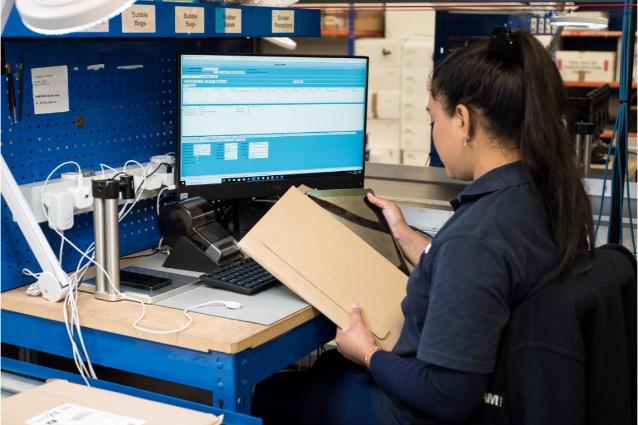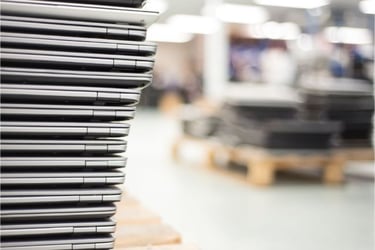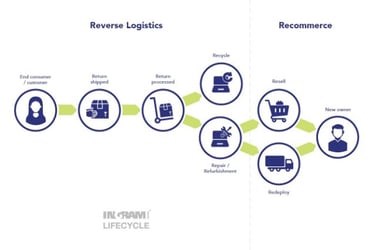Are you facing a loss of value on goods, overstocks, or returned products? Moving these along the supply chain quickly is essential to combating the effects of depreciation.
While the products are sitting on your balance sheets, it’s in your best interests to pass them along so you don’t suffer losses from depreciation.
Ingram Micro Lifecycle is a third-party logistics provider, supporting customers in different industries with their technology requirements around the globe. Our services enable a circular economy while also working to recover the maximum value without compromising sustainability efforts.
In this article, we’ll explain what depreciation is and the various factors that affect its rate, speeding it up or slowing it down. You’ll better understand how you can improve your efforts with the supply chain to minimize these effects.
The definition of depreciation
Depreciation is the impact of time on the monetary value of a physical product. It is defined as “the process of losing value.”
5 factors that impact depreciation
Several factors influence the rate of depreciation. While the majority of these are causes outside your control, there are ways you can reduce their impact, such as employing repair and refurbishment services or working with a returns management partner. These ensure your products are in the best shape they can be while working rapidly to move them through the supply chain.
1. Acquisition cost / starting value
This is the initial cost of the product. The monetary value that your customer would have to pay to own the product.
A high starting cost leads to high depreciation.
2. Estimated lifetime
This is how long you anticipate that the product will provide a use. It can be affected by factors such as maintenance and intensity of use. Employ repair and refurbishment services to prolong the product life and slow the impact of depreciation.
A low residual value leads to high depreciation.
3. Manufacturer reputation
This influences the perceived worth and desirability of the product. As a result, this often reflects in a higher starting value. It can also translate to higher quality components and durability which means value holds for longer.
Ultimately, the quality of the manufacturing process affects the acquisition cost, useful lifetime, and residual value.
A higher desirability means a lower depreciation.
4. Market demand
This is how much call there is for the product on the market. This is also linked to the desirability of a product and is impacted by supply. Sometimes, the smaller the supply of the product, the increased pressure put on the demand. Think of exclusive or limited-edition products. Conversely, overstocked products can be a signal of low demand (or poor forecasting!).
Low availability of a product can drive up individual prices. This has an impact on resale values in the secondary market. During times of crisis, supplies of products can run low which forces the prices of those available to unpredictable amounts.
A high market demand correlates with a low depreciation.
5. Obsolescence
This is similar to the estimated lifetime but is more aligned with technology and software, as opposed to the usefulness. A product becomes obsolete when the technology becomes outdated, support is ceased, or a newer model replaces it.
A fast obsolescence means a high rate of depreciation.
Tackling depreciation
Lifecycle extension services prolong the useful life of your device and increase the residual value when it becomes redundant or unwanted.
Ingram Micro Lifecycle offers management services for overstocks, leased products, and product returns. Through our available solutions, we work to recover the maximum value for your products by extending their useful life and harnessing access to a network of secondary market channels.
Get in touch with us today to discuss how we can help you minimize the impacts of depreciation on your products.
Related articles:
- How quickly do smartphone returns depreciate? 5 key factors
- Reverse logistics and recommerce revolution (REPORT)
- 7 ways to optimize technology reverse logistics
- Techniques for uplifting value on returned products
- 9 key reverse logistics factors that affect value recovery
- Tips for getting the most from your returns management partner
- Circular economy 101: moving beyond linear models













